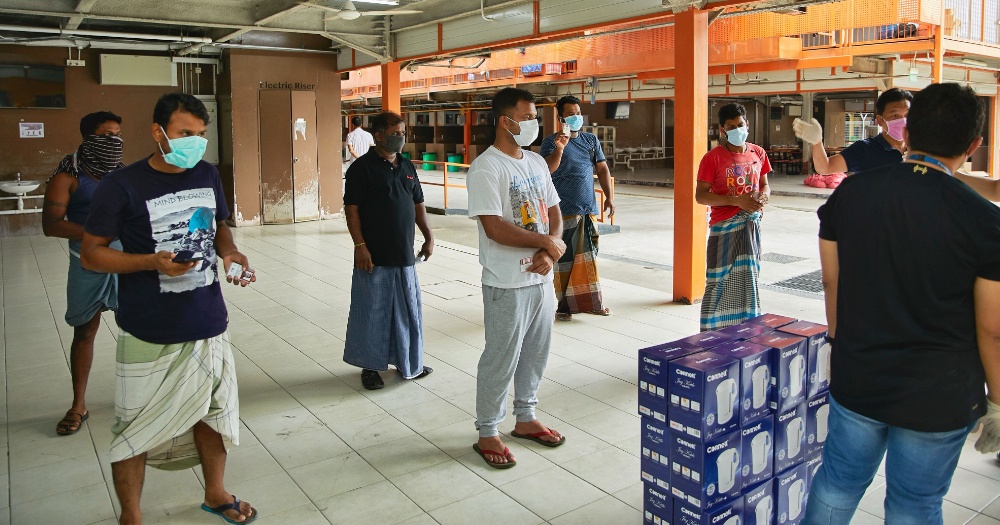Starting June 2, around 20,000 healthy and recovered migrant workers in the construction industry will be allowed to return to work.
This was announced in a press conference by the Multi-Ministry Taskforce on Covid-19 on Friday (May 15).
Some of these who live in dormitories, and potentially those in other industries, will be housed in areas designated as Blocks for Recovered Workers (BRWs) within their dormitory campuses.
Stringent measures at Blocks for Recovered Workers
The Ministry of Manpower said these BRWs are expected to by next week have a capacity of 5,400 beds, although it did not make clear if this figure represents all of its dormitories collectively or the number made available at each dormitory in Singapore.
It also mentioned that it is working toward getting some 60,000 dormitory residents into BRWs in the coming week — this represents about 20 per cent of Singapore's total dormitory population.
At these premises, tighter controls on entry and exit will apply, with physical segregation in place between BRW workers and their movement, as well as the rest of the dormitory's residents who are unwell or Covid-19-positive.
Workers in these blocks will only leave them for work, and must return afterwards, while dormitory operators will be required track all movements in and out of these blocks.
Other measures will be taken to minimise intermingling of the workers between different blocks, such as scheduling the use of communal facilities like kitchens and outdoor recreational areas — these will be reopened for staggered timing usage from groups living on the same floors and rooms.
Workers are also advised to stay within their level and rooms, and those in the same room will be assigned designated stoves, toilets, wash basins and showers.
There will also be a designated pick-up and drop-off area, and staggered pick-up and drop-off timings for workers coming and going to work from these BRWs.
The MOM also said these workers will be tested regularly, and have their temperature, heart rate and oxygen levels reported daily.
It also said it will provide timely access to medical support from onsite or regional medical posts, and tele-kiosks.
If a new case is detected after recovery, MOM says close contacts of the infected workers will be isolated or quarantined.
Josephine Teo thanks dormitory operators and workers for cooperation
At the press conference, Manpower Minister Josephine Teo also thanked dormitory operators for cooperating with the government to implement these strict measures at their premises.
Teo said it is a "huge effort" for operators to create the BRWs, and was buoyed by how the workers expressed support for the measures.
"I'm very cheered by the fact that dormitory operators tell me that the workers themselves support these measures. And even though it requires a lot of change in habits and what they have been accustomed to, they accept that this is for their own protection, and that it will enable them to resume work when the conditions allow."
Teo also thanked migrant workers for accommodating to these changes in this 'new normal'.
Ramping up testing of migrant workers
Meanwhile, as previously announced, the Ministry of Manpower (MOM) reiterated that the Ministry of Health (MOH) is working with related agencies to systematically test all 300,000 foreign workers living in dormitories in Singapore.
This, the government has said, has led to the large spikes in the numbers of Covid-19 cases amongst the migrant worker community.
Testing of workers residing outside of dormitories will also be a priority, Minister for Health Gan Kim Yong said on Apr. 27 — this means conducting tests on workers working in essential services.
As of May 12, the current rate of testing is around 3,000 workers daily, and a total of over 32,000 workers have been tested thus far.
Top photo courtesy of MOM
If you like what you read, follow us on Facebook, Instagram, Twitter and Telegram to get the latest updates.
